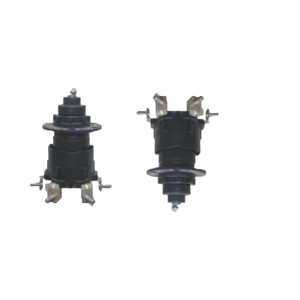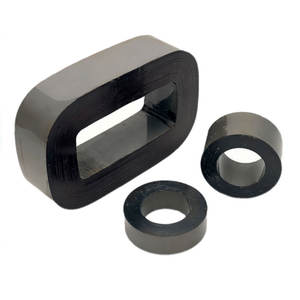Electronic Components Supplier | Transformers, Inductors, Inverters
PRODUCT PARAMETERS
Description
Overview of Transformer Pressure Gauge Release Valve Transformer Valve Pressure Relief Valve
Transformer accessories refer to various auxiliary equipment or materials used in conjunction with transformers to assist them in achieving their functions. Transformer Pressure Gauge Release Valve Transformer Valve Pressure Relief Valve is crucial for the regular operation of transformers, as they can ensure stable operation under various environmental conditions and improve the efficiency and reliability of transformers. At the same time, the mintenance and upkeep of transformer accessories are also important links to ensure the normal operation of transformers, and regular inspections and replacements are needed to ensure their normal operation. Transformer accessories are essential auxiliary equipment and materials for the regular operation of transformers and are of great significance for stable operation and efficiency.
Transformer Accessories Mainly Include the Following Types
Transformer oil: used for insulation and cooling.
Transformer oil conservator: stored transformer oil and maintained a stable oil level.
Radiator: Used to transfer the heat generated by the transformer to the surrounding air and maintain stable transformer temperature.
Respirator: used to regulate the internal gas pressure of the transformer and prevent deformation of the transformer oil tank.
Explosion-proof tube: used to prevent the gas and oil flow generated in the event of internal faults in transformers from spraying out.
Insulation sleeve: used to protect the windings and leads of transformers, preventing electric shock and short circuits.
Thermometer: used to monitor the temperature of transformers and detect abnormal situations promptly.
Gas relay: used to monitor the pressure and temperature of the gas inside the transformer and detect faults promptly.
Voltage and current transformers: Used to convert transformers’ voltage and current signals into measurable electrical signals.
Lightning arrester: used to protect transformers from lightning and overvoltage impacts during operation.
Specifications of Transformer Pressure Gauge Release Valve Transformer Valve Pressure Relief Valve
This transformer pressure gauge release valve protects your equipment. It combines a pressure gauge and a relief valve in one strong unit. You see the real-time pressure clearly. The valve automatically opens if pressure gets too high. This prevents dangerous overpressure situations. It protects transformers and other important gear. The valve resets itself once pressure drops back to safe levels. No manual reset is needed. This ensures continuous protection.
The gauge shows pressure accurately. It uses a reliable dial face. The scale is easy to read. Common pressure ranges are available. You choose the range matching your system needs. The valve’s release point is preset precisely. It opens exactly at the specified pressure limit. This accuracy is crucial for safety.
The valve body uses strong materials. Brass or stainless steel are common choices. These resist corrosion well. They handle tough conditions inside transformer tanks. Seals are made from durable elastomers. These seals hold pressure reliably. They withstand oil and temperature changes. Connection types are standard. NPT threads are typical. Sizes match common pipe dimensions. This makes installation straightforward.
Operating temperature limits are important. The valve works reliably within a set range. This range covers most transformer environments. The valve meets industry safety standards. It follows recognized specifications for pressure relief devices. Regular maintenance checks are simple. Visual inspection confirms the gauge reads correctly. Testing the valve’s release function periodically is good practice. This ensures it works when needed most. Proper installation is key. Follow the manufacturer’s instructions carefully. Position the valve correctly in the system. This guarantees accurate pressure readings and correct relief valve operation.
Applications of Transformer Pressure Gauge Release Valve Transformer Valve Pressure Relief Valve
Transformers handle electricity. They get hot during operation. Their internal cooling oil expands. This expansion creates pressure inside the tank. Too much pressure is dangerous. It can damage the transformer. It can cause leaks. It might even cause the tank to rupture. This leads to failure. It risks fire. It creates a safety hazard.
Transformer pressure gauges are vital tools. They constantly show the pressure inside the tank. Operators see the pressure level. They monitor for normal operation. They spot rising pressure early. This allows for quick action. It helps prevent problems.
Transformer pressure relief valves are critical safety devices. They activate automatically. They open when internal pressure gets too high. This happens fast. The valve releases the extra pressure quickly. It vents the pressure outside safely. This action protects the transformer tank. It stops the tank from bursting. It prevents explosions. It minimizes damage. It keeps people safe.
Transformer valves include these pressure relief valves. They also include other valves. These valves control oil flow. They allow for filling the transformer. They allow for draining oil. They let technicians take samples. Valves are access points. They are essential for maintenance. They are essential for safety checks.
These parts work together. The pressure gauge gives constant information. The pressure relief valve acts during emergencies. Other valves support operation and upkeep. Monitoring pressure is key. Having a reliable safety valve is non-negotiable. This combination protects the valuable transformer. It ensures stable power delivery. It prevents costly failures. It safeguards the surrounding area.
Company Profile
PDDN Photoelectron Technology Co., Ltd. is one of the leading enterprises in power electronics technology and power products, which is fully involved in developing solar inverters, transformers, voltage regulators, distribution cabinets, thyristors, modules, diodes, heaters, and other electronic devices or semiconductors. We will be committed to providing users with high-quality, efficient products and considerate service.
It accepts payment via Credit Card, T/T, West Union, and Paypal. PDDN will ship the goods to customers overseas through FedEx, DHL, by sea, or by air. If you want high-quality Transformer Pressure Gauge Release Valve Transformer Valve Pressure Relief Valve, please send us inquiries; we will be here to help you.
Payment Methods
L/C, T/T, Western Union, Paypal, Credit Card etc.
Shipment
By sea, by air, by express, as customers request.
Storage Conditions
1) Store in a dry environment at room temperature.
2) Avoid damp and high temperature.
3) Use immediately after opening the inner packing bag.
5 FAQs of Transformer Pressure Gauge Release Valve Transformer Valve Pressure Relief Valve
This valve releases extra pressure inside transformers. Too much pressure risks explosions or leaks. This valve opens automatically when pressure gets too high. It protects the transformer and nearby equipment.
What does this valve actually do?
Its main job is safety. It vents built-up pressure inside the oil transformer tank. Pressure builds from overheating or electrical faults. The valve opens to let pressure out. This prevents the tank from rupturing.
Why is this valve important?
Transformers contain oil and insulation. High pressure can rupture the steel tank. A rupture causes oil fires and serious damage. The valve stops this. It keeps the transformer safe and operating.
How do I know it needs replacing?
Look for oil leaks around the valve body. Listen for constant hissing, meaning it might not seal properly. Check the pressure gauge reading often. If it sticks or shows wrong pressures, inspect the valve. Replace it every 10-15 years or after it operates.
What happens if the valve fails?
A stuck valve is dangerous. Pressure keeps building with no release. The tank could explode. Oil sprays out, causing fire and pollution. Equipment fails. People get hurt. A leaking valve wastes oil and lets air in. Air harms the insulation and causes more overheating.
How do I maintain it?
Keep the valve clean and free of dirt or paint. Test its operation yearly during maintenance. Follow the maker’s instructions. Watch the pressure gauge. Ensure the valve outlet points safely away. Replace it if damaged, leaking, or past its service life. Regular checks are crucial.
REQUEST A QUOTE
RELATED PRODUCTS

Vehicle Defense Transformer Energy Rail Marine’s Noise Vibration Control Wire Rope Shock Isolator Machine Tools Accessories
Off Load Tap Changer used for Transformer China Manufacturer
Oil level gauge transformer China Manufacturer

Socket Clevis Electrical Fittings Power Line Fittings Power Transformer Fittings

Hot ing Electrical Accessories Rated Current 200A Custom Mounting Bolt Open Loop Current Sensor Transformer



